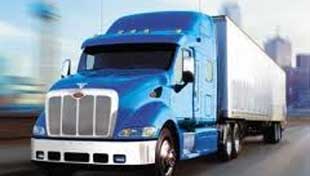| |
|
| |
|
 |
Supply
Chain by the Numbers |
| |
|
| |
- Nov. 7, 2019 -
|
| |
|
| |
|
| |
|
| |
DHL with New China to Europe Rail Service; US Trade Deficit Falls, but Still Surpasses 2018; Safety Warning System for Warehouse Workers; Truck Operating Costs Rose Sharply Last Year |
| |
|
| |
| |
| |
| |
10 |
|
That's the low end of expected transit times of 10-12 days for a new rail express service from China to Europe from DHL Global Forwarding. Launched in partnership with Xi'an International Inland Port Investment & Development Group Co., DHL said the service from Xi'an in China to Hamburg and Neuss in Germany is now the fastest available. The new rail express follows a route of about 9,400 kilometer through Kazakhstan, Russia, Belarus and Lithuania to Kaliningrad Oblast, a part of the Russian Federation on the southern coast of the Baltic Sea. It then enters the European Union via the Mamonovo-Braniewo crossing between Russia and Poland before continuing on to the port of Hamburg and finally to Neuss on the River Rhine. That's quite a ride. Rail services between Asia and Europe – first pioneered by HP - have increased in popularity in recent years with shippers attracted by improved reliability, faster transit times when compared to ocean shipping options and lower costs than air cargo.
|
|
|
| |
| |
|
|
|
That's how many warehouse workers that will be wearing safety monitoring devices from a company called StrongArm Technologies by the end of next year, the company says. The StrongArm device is about the size of a smartphone and is worn on a sort of harness in the front of the body. The system then tracks a worker's every move, looking for behaviors that could lead to injuries, such as bending too deeply to pick up a box or twisting too much to set one down, according to an article this week on Boomberg.com. When a worker crosses a ergonomic line, the device on the worker's chest vibrates to send a warning that his or her chance of getting hurt is increased – sort of the "slight correction"
for dogs promised by electric fence companies. StrongArm says users of its system include Walmart, 3PL Geodis, Heineken and Toyota. Walmart says it's testing StrongArm in eight distribution centers StrongArm is also establishing relationships with insurance companies interested in ways to reduce workers compensation costs. Privacy advocates are critical of the system, but StrongArm says it's not tracking individual productivity and that its products aren't used to punish individual workers or to contest workers compensation claims. |
| |
| |
|
| |
| |
7.7% |
 |
That was the rise in operating costs for freight trucks in 2018, according to a new report from the American Transportation Research Institute (ATRI). This latest annual report found that the average marginal cost per mile incurred by motor carriers in 2018 rose to $1.82. The major factor in the rise: a 17.7% rise in fuel costs, from 36.8 cents per mile in 2017 to 43.3 cents in 2018. Driver wages and benefits increased 7.0 and 4.7%, respectively. In 2018, fuel costs made up 24% of total average costs, while wages and benefits accounted for 43%. Insurance costs also rose sharply, up 12% last year. From 2012 to 2018, overall operational costs for truckers have increased more than 11.6%, just a bit above the 10.8% overall inflation rate for that same time period. The real question is how the rise in operating costs compares to changes in rates. We'll note the Cass Linehaul Index, which measures truckload rates, was up 30% from the start of 2012 to the end of 2018.
|
| |
| |
| |
| |
| |
|
|
|
| |
 |
 |
| |
|
|
| |